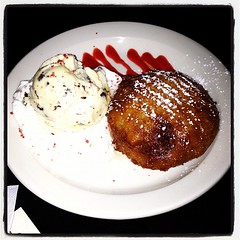 Like many others, I was none too pleased to hear of Anheuser-Busch/InBev’s purchase of Goose Island. However, I was less concerned with Goose Island’s motivations than I was with AB/InBev’s. As far as Goose Island goes, Greg and John Hall were understandably weary from running the day-to-day operations of a business for as long as they had. They wanted the company to grow and needed an infusion of capital. No problems there.
Like many others, I was none too pleased to hear of Anheuser-Busch/InBev’s purchase of Goose Island. However, I was less concerned with Goose Island’s motivations than I was with AB/InBev’s. As far as Goose Island goes, Greg and John Hall were understandably weary from running the day-to-day operations of a business for as long as they had. They wanted the company to grow and needed an infusion of capital. No problems there.
However, knowing what I know of AB/InBev’s sales strategies, I will likely stop buying what little Goose Island product I already did. My previous purchases consisted entirely of Bourbon County Stout, Sofie, Pere Jacques and Juliet so I won’t put much of a dent in the bottom line, but I will miss those products. What are the motivations behind my new shopping strategy? Well, as far as I can tell, AB/InBev bought Goose Island for two reasons. Firstly, Goose Island is an attractive, profitable commodity with lots of room for growth. It’s a great addition to AB/InBev’s portfolio. Secondly, AB/InBev seems to be trying to shore up its slipping market share by snatching up one of the companies that put a decent-sized dent into that market share in the Midwest.
In other words, if I buy a Goose Island product now, the profits go into AB/InBev’s coffers (to at least some degree). I cannot abide such an outcome. Go to the supermarket beer section and you’ll find out why. See that giant wall of Bud Light products? How many different formats do you count? Ten? Twelve? Fifteen? The “wall of product” sales strategy is despicable. Glass bottles, aluminum bottles, aluminum cans, all of various sizes, all in boxes and packs of different quantity, all limiting consumer choice (taking shelf space from competitors) by flooding the market with a load of different formats that all contain THE SAME PRODUCT! It makes me a little sick to my stomach.
But I’m not all that worried that I won’t buy Goose Island products anymore. Surely some in the Midwest, for whom Goose Island is a regular purchase, will experience greater difficulty. In my case though, I will simply continue to focus on the plethora of world-class, local products readily available for my consumption. I need only look a couple hours to South to San Diego to find Port Brewing/The Lost Abbey, Stone, Ballast Point, AleSmith, etc, etc, ad infinitum. One can likely make the same argument in the Midwest. There is no shortage of non-AB/InBev-owned breweries in the middle of the country turning out well-made, readily available craft beer.
My point, then, is simple. In the short term, the sale of Goose Island is really much ado about nothing. As long as those who care about where their money goes keep themselves educated, they can make informed purchases. If you don’t care about AB/InBev’s sales strategies, then you needn’t change a thing. If you do care about those sales strategies, and they make you a little queasy, then don’t buy beer from companies in which AB/InBev holds a stake.
In the long term, I suppose we’ll see whether AB/InBev tries to use Goose Island as a means to muscle smaller beer producers out of the market. If they do, I am confident that there will be a strong consumer pushback. There are few, if any, consumer bases that are better or more informed than the craft beer-drinking public. And their ranks are growing every day. People care more than ever about where their purchases are coming from and where their money is going because it’s easier to find out than ever before. The internet, and the ready availability of relatively reliable information is the great equalizer for smaller companies whose focus is quality and integrity. Let’s hope those companies continue to leverage the internet and social media to get their message out and keep the public well (and accurately) informed.
Photo Credit: AB/InBev Goose Mock-Up: Girl’s Guide to Beer








